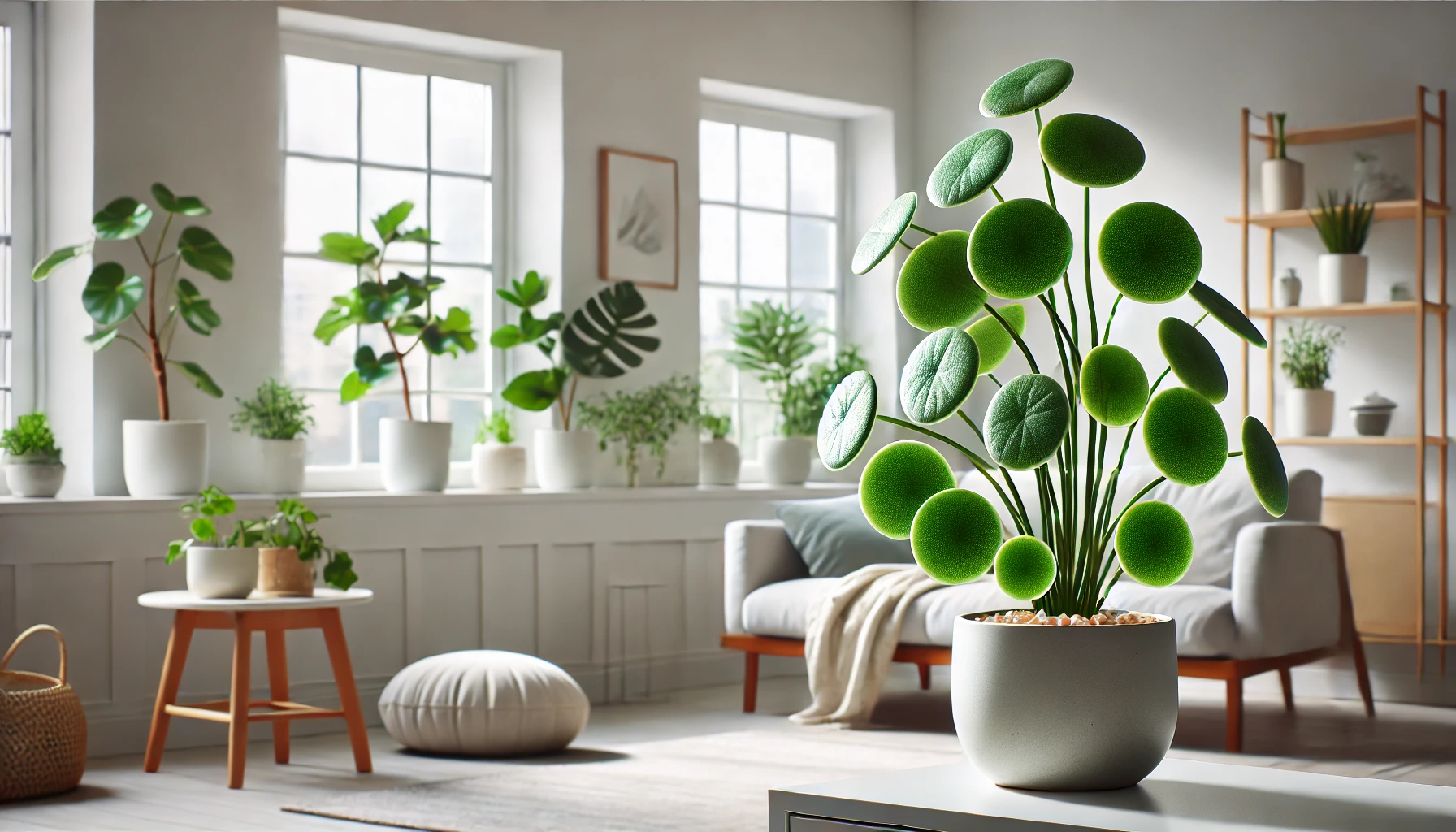
The Chinese Money Plant, formally known as Pilea peperomioides, is a popular houseplant celebrated for its round, coin-shaped leaves and elegant appearance. This charming plant can grow up to 12 inches tall and equally wide, making it a perfect addition to any home or office.
History and Ideal Growing Conditions
Native to the southwestern Yunnan province of China, the Chinese Money Plant has a fascinating history. It was introduced to the West by a Norwegian missionary in the 1940s and has since become a favorite among plant enthusiasts for its unique appearance and ease of care.
Ideal growing conditions for the Chinese Money Plant include bright, indirect light and well-draining soil. This plant thrives in moderate temperatures ranging from 60-75°F and prefers a humid environment. It is relatively low-maintenance, making it suitable for both beginners and experienced gardeners.
Pet Safety and Toxicity
One of the wonderful aspects of the Chinese Money Plant is its non-toxic nature. Unlike many houseplants, it poses no threat to pets, making it an ideal choice for households with cats and dogs. You can enjoy the beauty of this plant without worrying about your furry friends.
Best Practices for Caring for Chinese Money Plant
Caring for a Chinese Money Plant involves understanding its specific needs and preferences. Here’s a comprehensive guide to ensure your plant remains healthy and vibrant.
Watering and Humidity
The Chinese Money Plant prefers to be kept slightly moist but not waterlogged. Water the plant when the top inch of soil feels dry to the touch. Overwatering can lead to root rot, while underwatering may cause the leaves to droop. Using room-temperature water helps prevent shock to the roots.
Maintaining moderate humidity is also beneficial. If your home is particularly dry, consider placing a humidifier nearby or setting the pot on a tray filled with pebbles and water. This will create a micro-environment that mimics their natural habitat.
Soil, Light, and Temperature
For soil, the Chinese Money Plant thrives in a well-draining potting mix. A blend of peat moss, perlite, and regular potting soil works well. This mix ensures that the roots are not sitting in water, which can be detrimental.
Light is another critical factor. The Chinese Money Plant needs bright, indirect light to thrive. Direct sunlight can scorch the leaves, while too little light will result in leggy growth. An east or west-facing window is ideal.
Temperature-wise, this plant is comfortable between 60-75°F. Avoid placing it near drafts or heating vents, as sudden temperature changes can stress the plant.
Common Problems and Remedies
Even with the best care, Chinese Money Plants can encounter a few common issues. Yellowing leaves often indicate overwatering, while brown leaf tips may suggest low humidity. Pests like aphids and spider mites can occasionally be a problem. Regularly inspect your plant and treat any infestations promptly with insecticidal soap or neem oil.
Propagation and Benefits
Propagating Chinese Money Plants is easy and rewarding. The plant produces “”pups”” or offshoots, which can be carefully separated from the parent plant and potted individually. Simply cut the pup from the main plant, ensuring it has some roots, and place it in a pot with fresh soil.
Besides their aesthetic appeal, Chinese Money Plants are known for their ability to purify the air. Their unique shape and vibrant green color can also reduce stress and improve mood, making them a wonderful addition to any living space.
Final Thoughts
The Chinese Money Plant is a delightful and easy-to-care-for houseplant that can brighten up any home. With its non-toxic nature, it is safe for households with pets and children. By providing the right care and conditions, you can enjoy the beauty and benefits of this stylish plant for many years. Happy gardening!
Stay connected with the world of plants! Subscribe to Phylofy for expert gardening tips, DIY projects, and eco-friendly inspiration. Join our community and nurture your love for nature. Don’t miss exclusive content and updates. Subscribe now!



